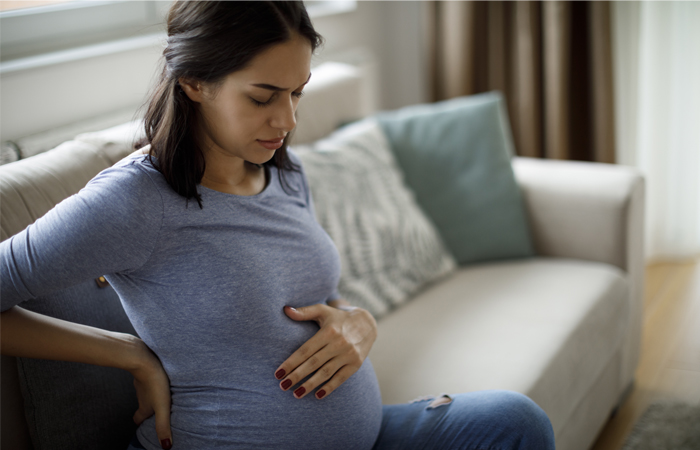Tackling women's heart health
In Conditions
Follow this topic
Bookmark
Record learning outcomes
Heart health inequalities remain high for women, who are twice as likely to die of a heart attack than men, but pharmacy teams can raise awareness of this and help to ensure women get the support they need
Many women and girls don’t realise they may be at risk of coronary heart disease, believing it to be a man’s problem. Yet, according to the British Heart Foundation (BHF), 24,000 women die from coronary heart disease in the UK each year, most commonly due to a heart attack – that is an average of 65 women per day.

Women tend to wait longer before calling 999 after first experiencing heart attack symptoms, and this delay can dramatically reduce their chance of survival. Raising awareness among women and healthcare professionals of the main risk factors may help to close the gender gap.
“Unfortunately, women are twice as likely to develop coronary heart disease than breast cancer,” says Philippa Hobson, senior cardiac nurse at the BHF. “Women go for routine mammograms but don’t get their heart checked in a similar fashion, not realising the risk of developing coronary heart disease is greater. They may think they’re not at risk and don’t take the time to think of their heart health in the same way as men do – or they ‘don’t have time’ to be ill.”
In October 2019, the BHF released a new briefing entitled ‘Bias & Biology’ to paint a picture of how women in the UK are disadvantaged at every stage of having a heart attack, compared to men. Failing to recognise the signs of the condition and delaying seeking help, together with gender inequalities in heart attack care, is costing women’s lives, the briefing found. It also revealed that women tend to arrive at hospital later than men when having a heart attack, women are 50 per cent more likely than men to receive a wrong initial diagnosis and women are less likely than men to receive a number of potentially life-saving treatments in a timely way.
In addition, research at the University of Edinburgh in October 2019, revealed that women still receive poorer heart attack treatment than men, even when rates of diagnosis are the same. In this study, women were about half as likely as men to receive recommended heart attack treatments, including the fitting of stents, dual antiplatelet therapy and preventative treatments including statins.
It is currently unclear why these disparities occur and the BHF says more research is needed to fully understand the root causes.
Some 24,000 women die from coronary heart disease each year in the UK
Highly pressured
The main risk factors for heart disease include high blood pressure, high cholesterol, smoking, obesity, diabetes and a family history of heart disease. Research shows that while these risk factors are the same for men and women, they are often more serious for women. Smoking increases women’s heart attack risk up to twice as much as men’s, high blood pressure increases women’s risk 80 per cent more and type 2 diabetes increases it 50 per cent more.
“Although oestrogen has a protective effect on the body as a woman goes through her reproductive years, the coronary arteries can still start furring up if she smokes or has any of the other risk factors we associate with coronary heart disease,” says Philippa. “It is really important to live a healthy lifestyle and to be aware of the risks whatever age you are.”
Mamas Mamas, professor of cardiology at Keele University, says that younger women have the worst outcomes after a heart attack, so need to be aware of their individual risk. “One reason for this is that the medical profession doesn’t always consider them to be at a high risk of cardiovascular disease, which means they are less likely to get the right tests and treatments,” he says. “It is important to get this information out into the open, reminding women that their long-term health is not just about their risk of cancer but also about cardiovascular disease.”

Symptom check
Many people are under the impression that women experience atypical heart attack symptoms – that there are men’s symptoms and women’s symptoms. However, a research study published in August 2019 and funded by the BHF, showed that there is no key difference between heart attack symptoms, quashing one of the reasons given for women receiving unequal care. The University of Edinburgh researchers found that chest pain, including feelings of tightness, pressure or squeezing, is overwhelmingly the most common symptom in both men and women. A similar percentage of men and women reported pain that radiated to their left arm. More women had pain that radiated to their jaw or back, and women were also more likely to experience nausea in addition to chest pain. Less typical symptoms such as heartburn; back pain; or pain that was burning, stabbing or similar to that of indigestion, were more common in men than in women.
Professor Mamas says that while the symptoms are not different, women may use different language to describe them. “Chest tightness, breathlessness, blackouts and palpitations are all common symptoms of cardiovascular disease that are often overlooked and shouldn’t be ignored,” he says. “These may be seen as being caused by weight gain or getting older, but could indicate a significant problem. Lethargy and ankle swelling should also be assessed. Some people describe a feeling of indigestion when they are having a heart attack, or may experience increased sweating.”
Philippa adds that chest pain may be incorrectly seen as anxiety or a panic attack. “If women get a symptom that goes away, they often brush it off and get on with their day. Pain or discomfort in the collar bone, the back or stomach wouldn’t normally be associated with the heart, would it?” she says. “However, these are all potential signs of a heart attack, which are sometimes dismissed as they aren’t ‘typical’ or what you see on TV when someone clutches their chest and collapses on the floor. Missed opportunities can have devastating consequences if a heart attack is missed or not treated quickly.”
If a woman has any of the symptoms mentioned above, she should call 999 so that a first responder can visit and do an electrocardiogram (ECG). “This may not show a heart attack at this point, but the symptoms need to be taken seriously so they should still be taken to A&E and not be brushed off,” says Philippa. “The person will be assessed and asked about her medical history. This is important as high blood pressure, cholesterol and diabetes may not have been previously identified or diagnosed. A blood test is taken, which measures for a protein called troponin. This is released into the bloodstream during a heart attack. However, women tend to release less of this, so [the condition] may be missed.”
Pain in pregnancy
If women experience any chest pain or other potential heart attack symptoms during pregnancy, it is essential that they seek medical advice, as pregnancy puts significant pressure on the heart and circulation.
A report in December 2019 from the National Perinatal Epidemiology Unit (NPEU) at the University of Oxford revealed that cardiovascular disease, including heart attacks, heart failure and heart rhythm problems, is still a leading cause of maternal deaths in the UK. The authors of the report analysed 2.3 million pregnancies from 2015 to 2017 in the UK and Ireland. They found that many of the women who died from cardiovascular disease had classic symptoms that would have been flagged in a non-pregnant person, but instead were put down to their pregnancy. Three-quarters of the women who died did not know they had heart disease before they became pregnant.
Women who experience certain pregnancy-related problems, such as pre-eclampsia, gestational diabetes or miscarriage, may be at a much greater risk of heart disease in later life. “Women who have had pre-term delivery babies, multiple pregnancies and miscarriages are also at an increased risk,” says Philippa Hobson, senior cardiac nurse at the BHF. “They should be assessed and monitored closely during their pregnancies by their obstetricians and GP. If they have existing heart conditions, they should discuss this with their cardiologist as it may be unsafe for them and their baby if they go through with their pregnancy and develop problems as they get older.”

Support from pharmacy
Community pharmacies can help women understand their risk of heart disease by offering health checks, including blood pressure measurement and cholesterol testing. They can also offer relevant products, services and lifestyle advice, such as healthy eating, weight loss and smoking cessation, to help reduce their risk.
Steven Riley, director of consumer sales and marketing at OptiBiotix Health, says that diet is a huge factor in heart health. “Reducing intake of foods high in saturated fats and salt is a great start to lowering overall cholesterol levels,” he says. “Introducing a range of foods rich in beta-glucan or functional dietary fibre can also help to promote heart wellness. On the other hand, changes in diet alone may not be enough for individuals who don’t optimise effectively or innately have high cholesterol. This makes it important to consider incorporating supplements with natural science-backed ingredients.” As there is a wide range of supplements available, pharmacy teams should support customers when choosing which ones to purchase and encourage them to do their research first.
Philippa also says visual communications and campaigns, such as posters, can help to raise awareness of heart disease among pharmacy customers. “Everyone should ‘know their numbers’. Make sure to get NHS health checks for women aged 40 to 74 as high blood pressure and cholesterol don’t usually have symptoms. Blood pressure monitors can be useful devices to use at home,” she says. “Advice on quitting smoking will help women stop smoking, which is the single best thing they can do for their heart.”
Some ethnic groups may be at a higher risk of heart disease – a factor that community pharmacies should take into account when identifying customers at a higher risk. “When it comes to health, there is often a focus on Caucasian populations,” says Professor Mamas. “Southeast Asian people, for example, have a much higher risk of diabetes, while African-Caribbean people may be more prone to high blood pressure. The pharmacy team can become advocates for these communities, who may not be accessing primary care as often as they should be, and patients may identify more closely with their pharmacist who may be from the same community as them.”
Let’s talk about…
Pharmacy teams can help women manage a variety of common conditions with self care tips and product recommendations.

Thrush
Thrush is caused by a fungal infection. The main symptoms are a creamy-white, often odourless, discharge with vaginal itching and irritation. The infection usually clears up within a week of using an over-the-counter (OTC) antifungal treatment in the form of a cream, pessary or one-dose oral tablet. Wearing cotton underwear, washing with water and emollient rather than soap, drying properly after washing and avoiding sex until the symptoms have cleared up may also help.
Thrush tends to be more common in women with undiagnosed or poorly controlled diabetes, those with a weak immune system or after taking antibiotics. Women should consult a GP if they are experiencing thrush symptoms for the first time or if their symptoms keep coming back. Women with symptoms of thrush who are aged under 16, over 60 or who are pregnant or breastfeeding should consult their doctor too.
Bacterial vaginosis
Bacterial vaginosis (BV) is often mistaken for thrush so women may need a swab to confirm the diagnosis. BV causes a distinctive greyish-white, thin and watery vaginal discharge with a strong fishy odour, especially after sex, but it doesn’t usually cause vaginal irritation. It is triggered by an imbalance of the normal bacteria living in the vagina.
BV is usually treated with gels containing lactic acid and glycogen, which regulate the pH balance of the vagina. In some cases, antibiotics taken orally or in the form of creams or gels, may be needed. Pregnant women should consult their GP if their vaginal discharge changes, as BV can cause pregnancy complications.
Vaginal dryness
Vaginal dryness is common during the menopause due to a drop in oestrogen levels, but it can also be triggered by other hormonal changes or chronic conditions such as diabetes. It may cause discomfort during sex, vaginal burning, pain or itching and an urge to urinate more often. Many women don’t seek help, even though vaginal dryness can have a significant impact on their life. Effective treatments are available, including OTC water-based lubricants, used during sex, and vaginal moisturisers for regular use. For severe symptoms, a GP may prescribe topical oestrogen creams or pessaries.
Vaginal irritation
Vaginal irritation (vaginitis) is characterised by itching, soreness or burning in the vulval area. This has many causes, from infections and irritation to an allergy or poor hygiene. Women may be able to ease their symptoms by avoiding potential irritants such as soaps, bubble baths or deodorants, wearing natural-fibre underwear and using cotton-based sanitary products. If lifestyle changes are not helping, or women have vaginal discharge as well, they should be referred to a GP or sexual health clinic. Emollient creams and a low-dose topical corticosteroid may be prescribed to ease inflammation, or antibiotics for a sexually transmitted infection.
Cystitis
Inflammation of the bladder, also known as cystitis, is usually caused by a urinary tract infection. It can cause a burning or stinging pain when urinating; needing to urinate more regularly; and dark, cloudy or strong-smelling urine. Some women also feel generally unwell and get pain low down in their tummy. Mild cases often get better on their own, and women should drink plenty of water and take OTC painkillers to ease any pain. Some women believe that cranberry drinks and products that reduce the acidity of their urine, such as sodium bicarbonate or potassium citrate, will help, although there is little evidence that they are effective. If the symptoms do not start to clear up after three days, or are getting worse, the customer should be advised to speak to a GP. They may need a course of antibiotics.
Bladder weakness
Women of all ages can experience bladder weakness. Stress incontinence – leaking urine when coughing or sneezing – may be triggered by pregnancy, the menopause, obesity or ageing, while urge incontinence – a sudden urge to urinate – may be triggered by certain foods, drinks and medicines.
Losing weight, quitting smoking and easing any constipation can help. Women can buy products such as pads and pants to deal with any leakage, as well as pelvic floor toners to help strengthen the muscles.
All women with bladder weakness should be encouraged to speak to a GP, who can prescribe medicines to ease an irritable bladder, if appropriate, or refer them to a specialist physiotherapist for bladder training and pelvic floor exercises.
Menopause
The menopause is a natural part of ageing for women and usually occurs between the ages of 45 and 55. Oestrogen levels decline and menstruation ceases. Symptoms can vary between women, but some of the most common symptoms are hot flushes, which 75 per cent of women experience; night sweats; mood changes; vaginal dryness and discomfort; reduced sexual desire; poor concentration and weak bones.
Pharmacy teams can recommend OTC products to help manage individual symptoms. Self care advice can also be offered, such as recommending women wear loose clothing and easily removable layers, take warm showers instead of baths, cut down caffeine, eat a healthy balanced diet, quit smoking and avoid excessive amounts of alcohol.
Cognitive behavioral therapy (CBT) may help with low mood and anxiety. A recent survey by Anxiety UK revealed that 98 per cent of women report feelings of anxiety during the menopause and perimenopause.
If symptoms are severe and interfere with day-to-day life, women may wish to visit a GP to discuss the option of hormone replacement therapy (HRT). Available as patches, tablets and gels, this can help to relieve most menopausal symptoms and also help prevent the weakening of bones. In some studies, HRT has been linked to breast cancer, although the benefits of taking the treatment are generally believed to outweigh the risks. Customers can discuss any concerns with a GP.
